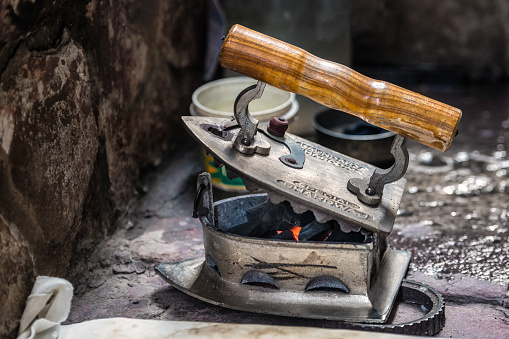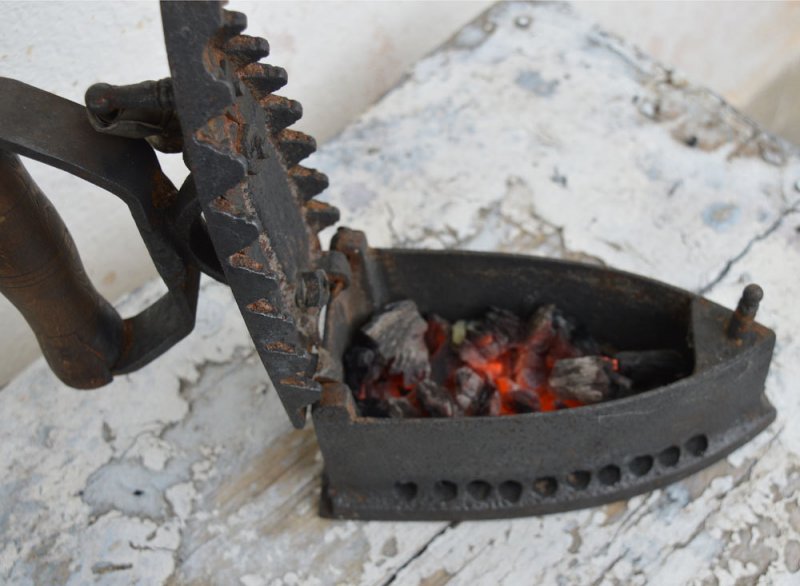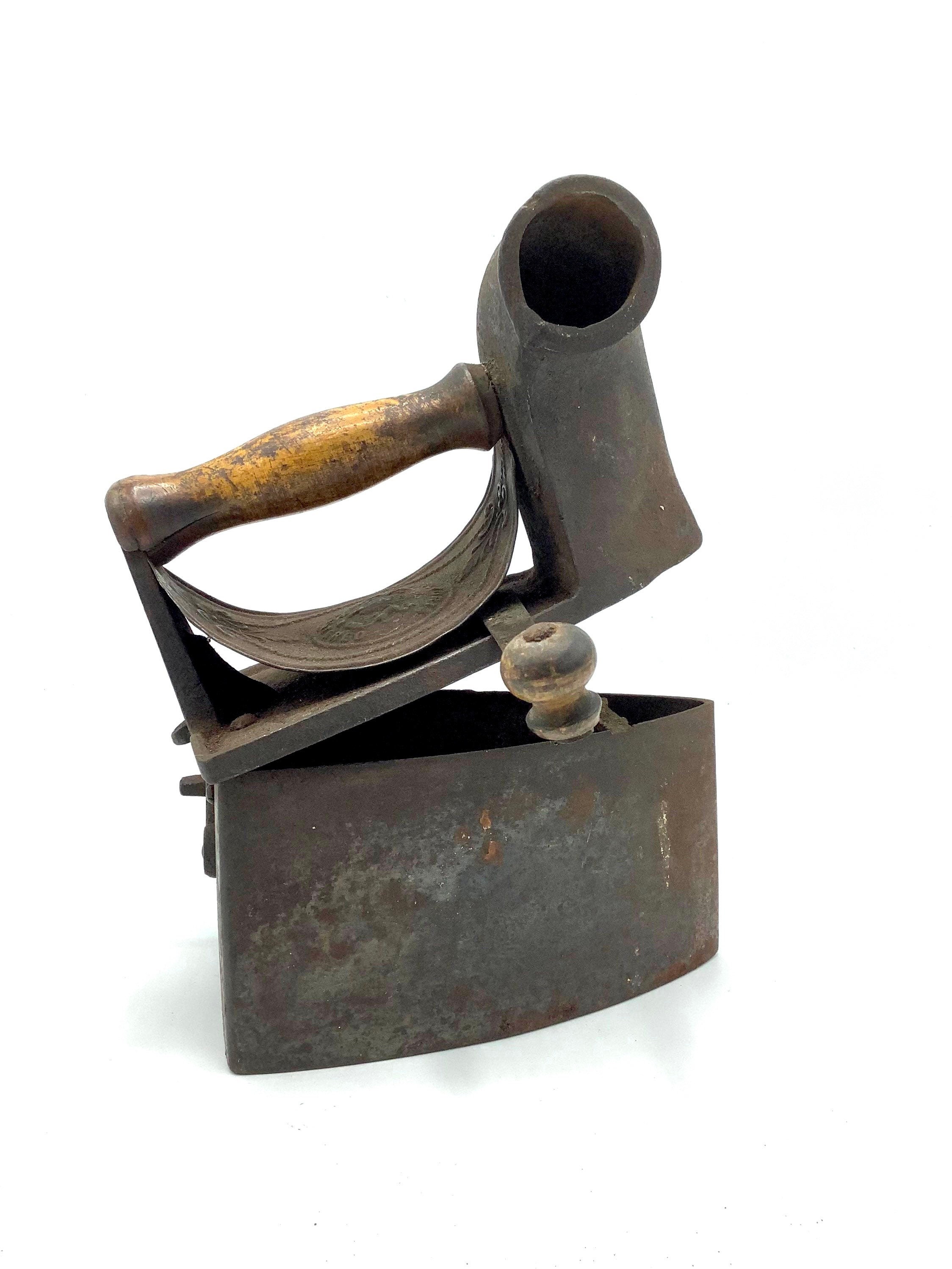Well, I think the shape of it probably made you say, yeap, that’s an iron. But did you know that for these kind of irons burning coal for heat to iron clothing. This is a charcoal iron.
From crumpled linen shirts to wrinkled silk dresses, the quest to achieve a sharp, neat appearance has driven the evolution of an important domestic tool – the iron. Today, electric irons are commonplace, providing a swift and efficient solution for maintaining creaseless clothes. However, it’s intriguing to peer back into history and explore a less-familiar predecessor – the charcoal iron.
Charcoal irons, as the name suggests, utilized charcoal as a heat source for ironing. They hold a fascinating spot in the annals of domestic appliances, and their influence, while diminished, is not altogether extinct.

The advent of charcoal irons can be traced back to the 8th century BC when Homer mentioned “a heated tool” in the Odyssey. Yet, it wasn’t until the 17th century AD that a tangible, consistent model of charcoal irons began to appear in households. Originating in Asia, particularly China and India, these irons were designed with a hollow interior to hold burning charcoal.
Typically, these irons were crafted from cast iron or brass. They were oval or rectangular in shape, with a hinged top that could be opened to add or replace the charcoal. Ventilation holes were present to ensure that the charcoal would continue to burn, thus maintaining the heat. The handle, often wooden or insulated with cork, was designed to protect the user from the heat radiating from the iron.
Charcoal irons were prized for their continuous high heat, a feature that made them particularly effective for ironing heavy fabrics. The heating process, though, was slow and required careful handling to prevent soot from staining the clothes.


Throughout the 19th and early 20th centuries, charcoal irons were extensively used across the world, including Europe, Asia, and Africa. In America, charcoal irons were particularly prevalent in rural areas, where electricity was still a luxury. By mid-20th century, however, the rising availability of electricity led to the increasing popularity of electric irons, rendering charcoal irons obsolete in many parts of the world.
Despite being supplanted by their electric counterparts, charcoal irons have not entirely vanished. In parts of Asia and Africa where electricity is sporadic or expensive, these tools of yesteryears still find use. They are also collected and displayed by antique enthusiasts, or even used as props in historical dramas and films, serving as a symbol of an era that has passed.
Moreover, the influence of charcoal irons is not confined to the past. They inspired the design of certain models of gas irons and even influenced the development of self-heating electric irons.
The history of charcoal irons is a testimony to human ingenuity and the timeless quest for aesthetic refinement. Their story is one of adaptation, survival, and impact. From homes in ancient Asia to 21st-century antique collections, they have journeyed a long way, leaving an indelible mark on the history of domestic appliances. Even as technology continues to surge forward, the story of charcoal irons serves as a nostalgic reminder of our humble beginnings in the sphere of domestic conveniences.
Have you ever seen one?

COMMENTS POLICY: We have no tolerance for messages of violence, racism, vulgarity, obscenity or other such discourteous behavior. Thank you for contributing to a respectful and useful online dialogue.